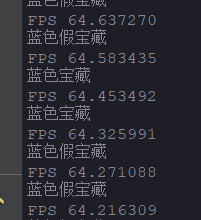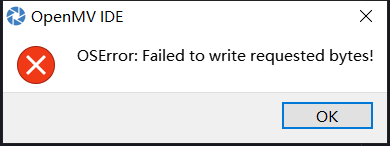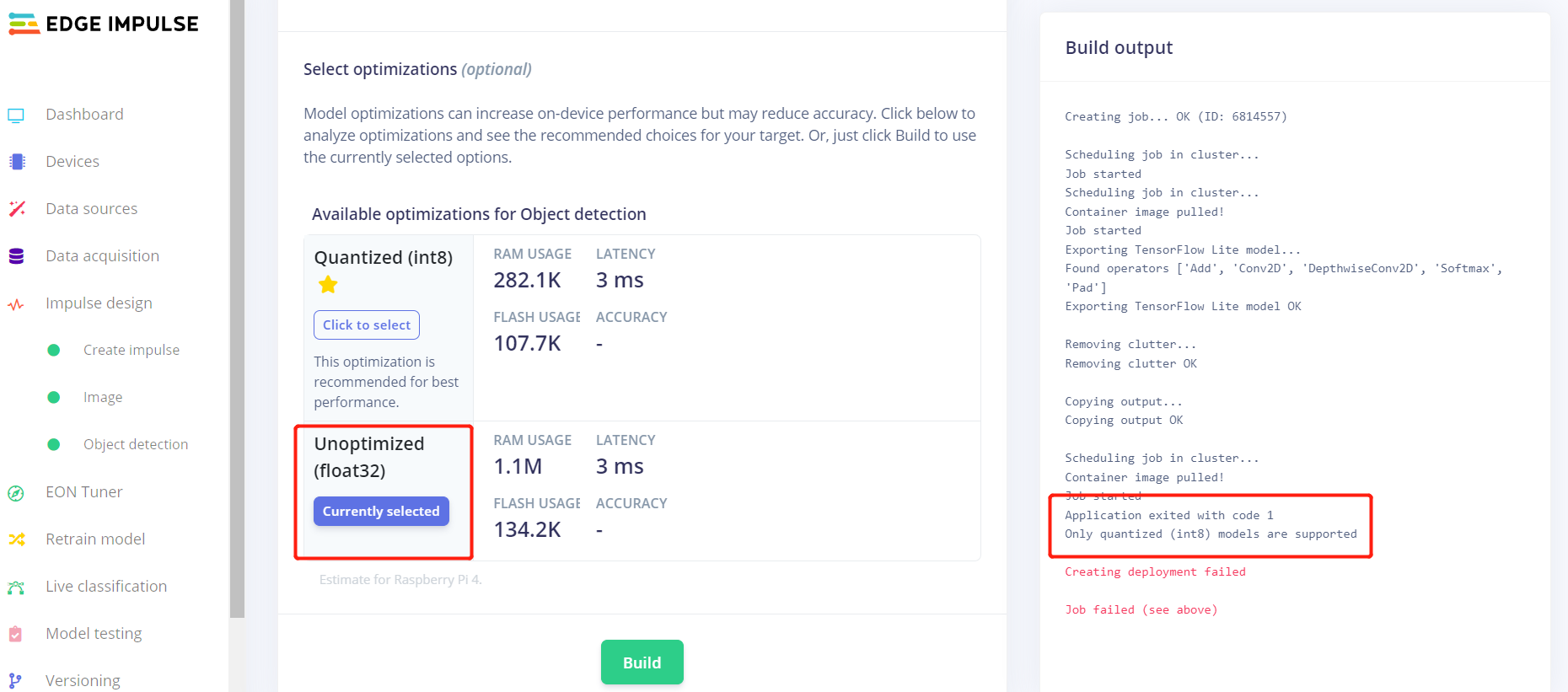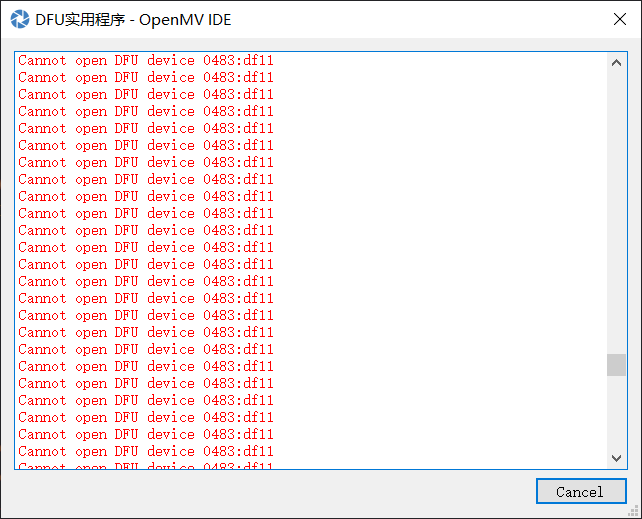比如把img划分成10*10的格子,在每个格子里面寻找黑点,然后返回点的坐标
I
iv2r 发布的帖子
-
请问怎样提高这段代码的识别准确性,现在识别不太稳定,会乱入其他类型发布在 OpenMV Cam
import sensor, image, time sensor.reset() sensor.set_pixformat(sensor.RGB565) # 灰度更快 sensor.set_framesize(sensor.QQVGA) sensor.skip_frames(time = 2000) clock = time.clock() sensor.set_auto_gain(False) # 颜色跟踪必须关闭自动增益 sensor.set_auto_whitebal(False) # 颜色跟踪必须关闭白平衡 threshold_B=[(0, 15, 0, 40, -80, -20)] #threshold_B=[(34, 58, -5, 46, -128, -14)] thresholds_R=[(30, 100, 15, 127, 15, 127)] while(True): clock.tick() img = sensor.snapshot().lens_corr(1.8) if img.find_blobs(threshold_B, pixels_threshold=100, area_threshold=100, merge=True): #找蓝色色块 if img.find_circles(threshold = 3500, x_margin = 10, y_margin = 10, r_margin = 10,r_min = 2, r_max = 100, r_step = 2):#圆形 for c in img.find_circles(threshold = 3500, x_margin = 10, y_margin = 10, r_margin = 10,r_min = 2, r_max = 100, r_step = 2): #img.draw_circle(c.x(), c.y(), c.r(), color = (255, 0, 0)) print("蓝色") else: print("蓝色假") if img.find_blobs(thresholds_R, pixels_threshold=100, area_threshold=100, merge=True): #找红色色块 if img.find_circles(threshold = 3500, x_margin = 10, y_margin = 10, r_margin = 10,r_min = 2, r_max = 100, r_step = 2):#圆形 for c in img.find_circles(threshold = 3500, x_margin = 10, y_margin = 10, r_margin = 10,r_min = 2, r_max = 100, r_step = 2): img.draw_circle(c.x(), c.y(), c.r(), color = (255, 0, 0)) print("红色假") else: print("红色") print("FPS %f" % clock.fps())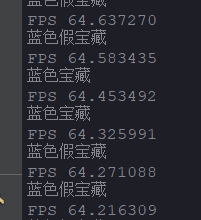
-
用的官方例程,想保存视频至openmv,总是写入失败发布在 OpenMV Cam
# 保存视频例程 # # 注意:您将需要SD卡来运行此演示。 # # 您可以使用OpenMV Cam来录制mjpeg文件。 您可以为记录器对象提供JPEG帧 # 或RGB565 /灰度帧。 一旦你完成了一个Mjpeg文件的录制,你可以使用VLC # 来播放它。 如果你在Ubuntu上,那么内置的视频播放器也可以工作。 import sensor, image, time, mjpeg, pyb RED_LED_PIN = 1 BLUE_LED_PIN = 3 sensor.reset() # 初始化sensor sensor.set_pixformat(sensor.RGB565) # or sensor.GRAYSCALE #设置图像色彩格式,有RGB565色彩图和GRAYSCALE灰度图两种 sensor.set_framesize(sensor.QVGA) # or sensor.QQVGA (or others) #设置图像像素大小 sensor.skip_frames(time = 2000) # 让新的设置生效 clock = time.clock() # 跟踪FPS帧率 pyb.LED(RED_LED_PIN).on() sensor.skip_frames(30) # 给用户一个时间来准备 pyb.LED(RED_LED_PIN).off() pyb.LED(BLUE_LED_PIN).on() m = mjpeg.Mjpeg("example.mjpeg") #mjpeg.Mjpeg(filename, width=Auto, height=Auto)创建一个mjpeg对象, #filename为保存mjpeg动图的文件路径 print("You're on camera!") for i in range(200): clock.tick() m.add_frame(sensor.snapshot()) #mjpeg.add_frame(image, quality=50),向mjpeg视频中中添加图片, #quality为视频压缩质量。 print(clock.fps()) m.close(clock.fps()) pyb.LED(BLUE_LED_PIN).off() print("Done! Reset the camera to see the saved recording.")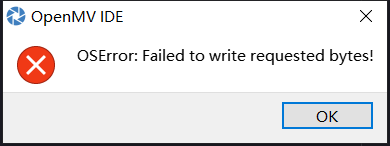 -
我们需要比9600更慢的传输速率发布在 OpenMV Cam
回复: 如何加延时函数
当openmv识别到色块时,需要让它一秒钟之内不发送数据,请问怎么解决,好像加上延迟函数它就跟睡死了,请问怎么解决呢?谢谢
import sensor, image, pyb import time, os, tf, math, uos, gc from pyb import UART,LED LED(3).on() sensor.reset() # Reset and initialize the sensor. sensor.set_pixformat(sensor.RGB565) # Set pixel format to RGB565 (or GRAYSCALE) sensor.set_framesize(sensor.QVGA) # Set frame size to QVGA (320x240) sensor.set_windowing((240, 240)) # Set 240x240 window. sensor.skip_frames(30) # Let the camera adjust. uart = UART(3, 115200) uart.init(115200, bits=8, parity=None, stop=1) def send_data(data1): global uart data = bytearray([0xb3,0xb3,data1,0x5b]) uart.write(data) net = None labels = None min_confidence = 0.5 try: # load the model, alloc the model file on the heap if we have at least 64K free after loading net = tf.load("trained.tflite", load_to_fb=uos.stat('trained.tflite')[6] > (gc.mem_free() - (64*1024))) except Exception as e: raise Exception('Failed to load "trained.tflite", did you copy the .tflite and labels.txt file onto the mass-storage device? (' + str(e) + ')') try: labels = [line.rstrip('\n') for line in open("labels.txt")] except Exception as e: raise Exception('Failed to load "labels.txt", did you copy the .tflite and labels.txt file onto the mass-storage device? (' + str(e) + ')') colors = [ # Add more colors if you are detecting more than 7 types of classes at once. (255, 0, 0), ( 0, 255, 0), (255, 255, 0), ( 0, 0, 255), (255, 0, 255), ( 0, 255, 255), (255, 255, 255), ] clock = time.clock() while(True): clock.tick() row_data=0 # 0 正常行走,1 停止,2 等待 img = sensor.snapshot() # detect() returns all objects found in the image (splitted out per class already) # we skip class index 0, as that is the background, and then draw circles of the center # of our objects for i, detection_list in enumerate(net.detect(img, thresholds=[(math.ceil(min_confidence * 255), 255)])): if (i == 0): continue # background class if (len(detection_list) == 0): continue # no detections for this class?]) if labels[i] == 's': row_data = 1 print('s') pyb.delay(1000) send_data(row_data) if labels[i] == 'w': row_data = 2 print('w') pyb.delay(1000) send_data(row_data) else: print(0) send_data(row_data) #print(row_data) -
请问这个程序采用了自适应阈值巡线(黑线),找不到黑线(屏幕全白)是什么原因发布在 OpenMV Cam
import sensor, image, math from pyb import UART,LED LED(3).on() uart = UART(3, 115200) uart.init(115200, bits=8, parity=None, stop=1) def send_data(data1,data2,data3): global uart data = bytearray([0xb3,0xb3,data1,data2,data3,0x5b]) uart.write(data) ROIS = [ (0, 0, 128, 40, 0.2), (0, 40, 128, 40, 0.4), (0, 80, 128, 40, 0.6) ] range_stop = [400,100,70] range_wait = 500 weight_sum = 0 for r in ROIS: weight_sum += r[4] sensor.reset() sensor.set_contrast(1) sensor.set_pixformat(sensor.RGB565) sensor.set_framesize(sensor.QQVGA2) sensor.set_brightness(10) sensor.skip_frames(30) sensor.set_auto_whitebal(False) sensor.set_vflip(False) sensor.set_hmirror(False) def find_max(blobs): max_size=[0,0] max_ID=[-1,-1] for i in range(len(blobs)): if blobs[i].pixels()>max_size[0]: max_ID[1]=max_ID[0] max_size[1]=max_size[0] max_ID[0]=i max_size[0]=blobs[i].pixels() elif blobs[i].pixels()>max_size[1]: max_ID[1]=i max_size[1]=blobs[i].pixels() return max_ID def degrees(radians): return (180 * radians) / math.pi #def stop1(): def car_run(): centroid_sum = [0,0] left_center=[-1,-1,-1] right_center=[-1,-1,-1] flag_cross=0 flag_wait = [0,0] flag_stop = [0,0] for r in range(3): blobs = img.find_blobs([(0, l), (-128, a),(-128, b)], roi=ROIS[r][0:4],merge=True,area_threshold=200,margin=3,pixel_threshold=200) if blobs: stop_flag = flag_stop[0] max_ID=[-1,-1] max_ID=find_max(blobs) img.draw_rectangle(blobs[max_ID[0]].rect(),50) img.draw_cross(blobs[max_ID[0]].cx(),blobs[max_ID[0]].cy(),50) if max_ID[1]!=-1: flag_cross=1 #有岔路口 img.draw_rectangle(blobs[max_ID[1]].rect(),50) img.draw_cross(blobs[max_ID[1]].cx(),blobs[max_ID[1]].cy(),50) if blobs[max_ID[0]].cx()<blobs[max_ID[1]].cx(): left_center[r]=blobs[max_ID[0]].cx() right_center[r]=blobs[max_ID[1]].cx() else: left_center[r]=blobs[max_ID[1]].cx() right_center[r]=blobs[max_ID[0]].cx() else: flag_cross=0 if blobs[max_ID[0]].pixels()>range_wait: flag_wait[0]+=1 elif blobs[max_ID[0]].pixels()>range_stop[r]: flag_stop[0]=r+1 left_center[r]=right_center[r]=blobs[max_ID[0]].cx() centroid_sum[0] += left_center[r] * ROIS[r][4] centroid_sum[1] += right_center[r] * ROIS[r][4] if stop_flag == 3 and flag_stop[0] == 2: flag_stop[1] = 1 else: flag_stop[1] = 0 center_pos =[0,0] center_pos[0] = (centroid_sum[0] / weight_sum) center_pos[1] = (centroid_sum[1] / weight_sum) deflection_angle = [0,0] deflection_angle[0] = -math.atan((center_pos[0]-64)/80) deflection_angle[1] = -math.atan((center_pos[1]-64)/80) deflection_angle[0] = math.degrees(deflection_angle[0]) deflection_angle[1] = math.degrees(deflection_angle[1]) if flag_wait[0] >= 2: flag_wait[1] = 1 else: flag_wait[1] = 0 if center_pos[0]==center_pos[1]==0: deflection_angle[1]=deflection_angle[0]=0 A=[int(deflection_angle[0]),int(deflection_angle[1]),flag_stop[1],flag_wait[1]] #1等待 return A while(True): cross = 1 flag = 1 if(uart.any()): flag = uart.readchar() if flag == 1: cross = 1 if flag == 2: cross = 1 if flag == 3: cross = 1 if flag == 6: cross = 1 if flag == 7: cross = 0 if flag == 4: cross = 1 else: cross = 1 img = sensor.snapshot().lens_corr(strength = 0.5, zoom = 1.0) img.bilateral(3,color_sigma=0.1,space_sigma=0.1)#采用双边滤波 img.gaussian(3, unsharp=True,)#图像消除锐化 histogram = img.get_histogram() THRESHOLD = histogram.get_threshold() l = THRESHOLD .l_value() a = THRESHOLD .a_value() b = THRESHOLD .b_value() print(THRESHOLD) img.binary([(0, l), (-128, a),(-128, b)]) row_data=[0,0,0,0] row_data[0],row_data[1],row_data[2],row_data[3]=car_run() if cross == 0: if row_data[0] < -4: send_data(-4,row_data[2],row_data[3]) if -4<= row_data[0] < 0: send_data(row_data[0],row_data[2],row_data[3]) if 0 <= row_data[0] <= 3: send_data(0,row_data[2],row_data[3]) if row_data[0] >3: send_data(row_data[0],row_data[2],row_data[3]) if cross == 1: if row_data[1] < -5: send_data(-5,row_data[2],row_data[3]) if -5<= row_data[1] < 0: send_data(row_data[1],row_data[2],row_data[3]) if 0 <= row_data[1] <= 3: send_data(0,row_data[2],row_data[3]) if row_data[1] >3: send_data(row_data[1],row_data[2],row_data[3])
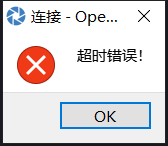
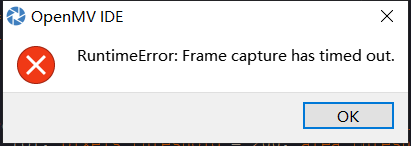 请问运行一会会出现这个提示框是代码的问题吗
请问运行一会会出现这个提示框是代码的问题吗
